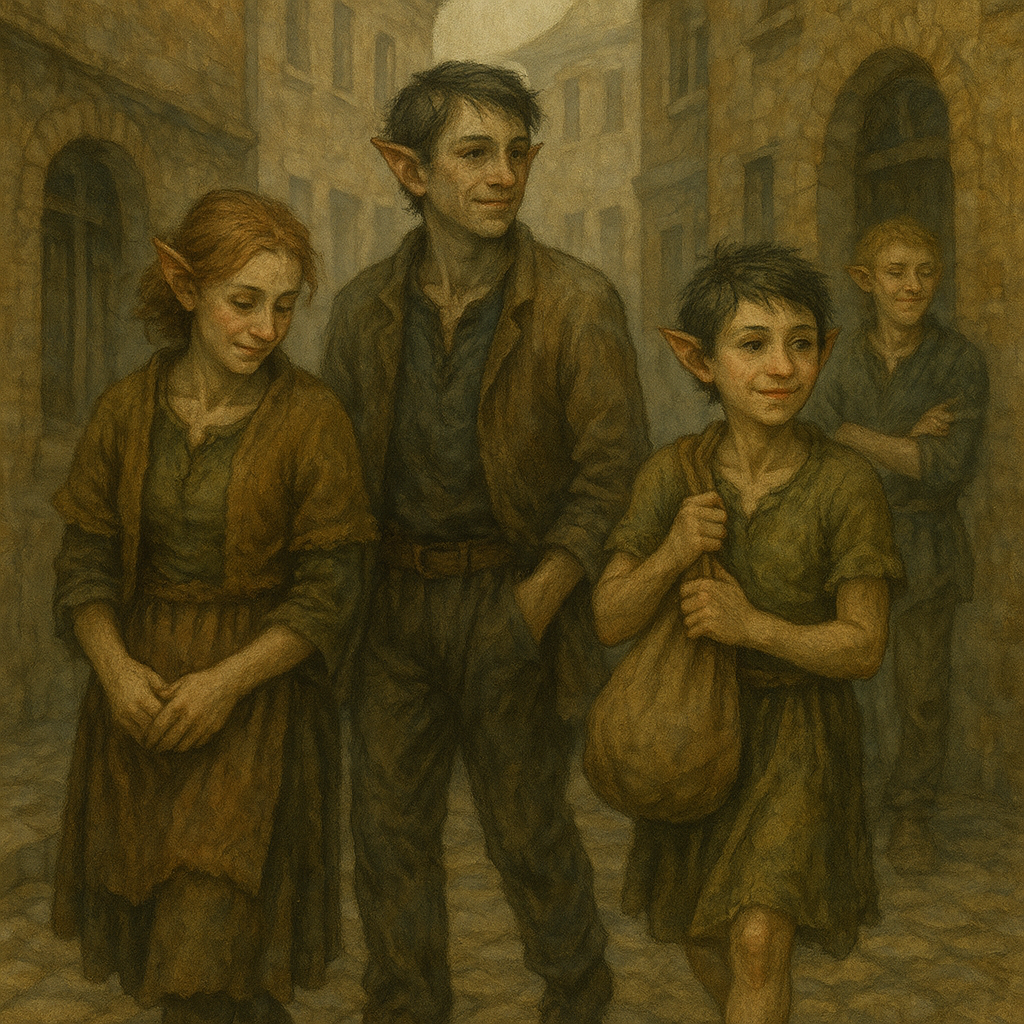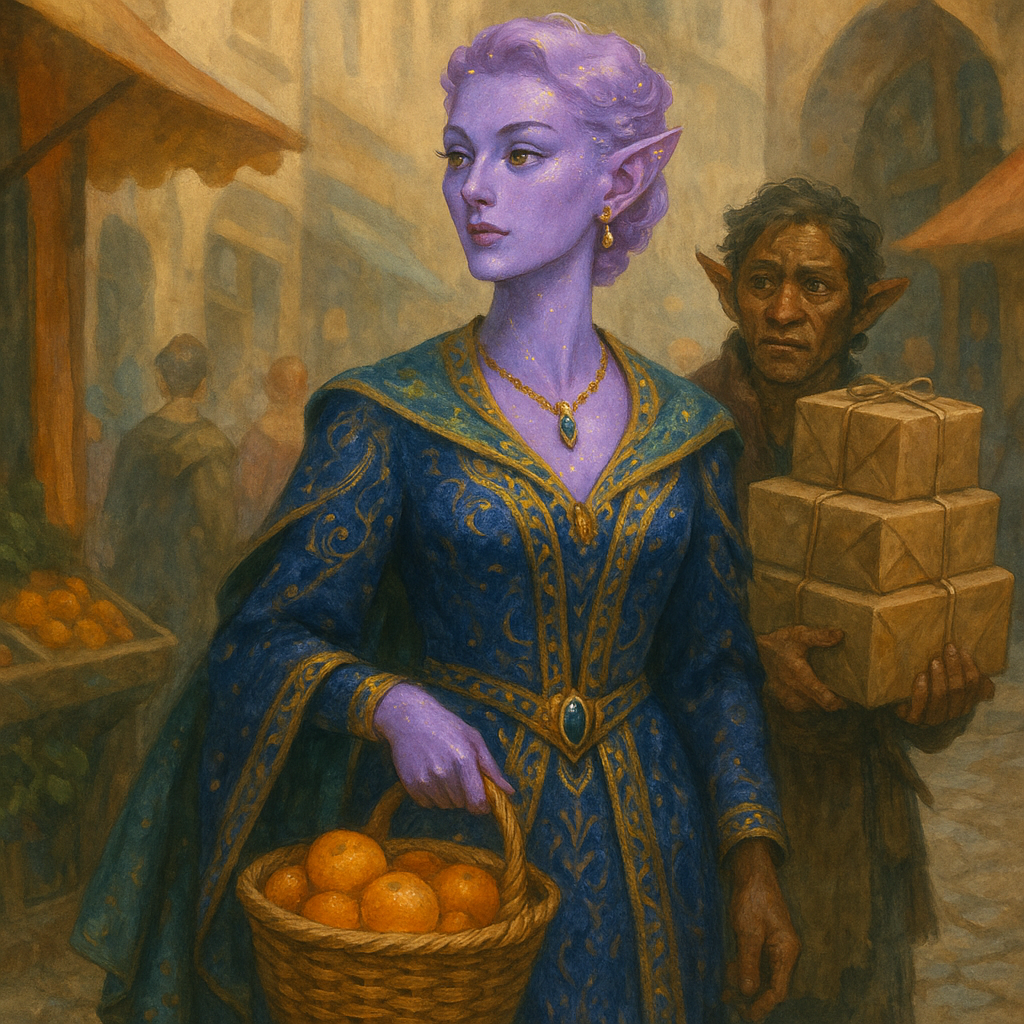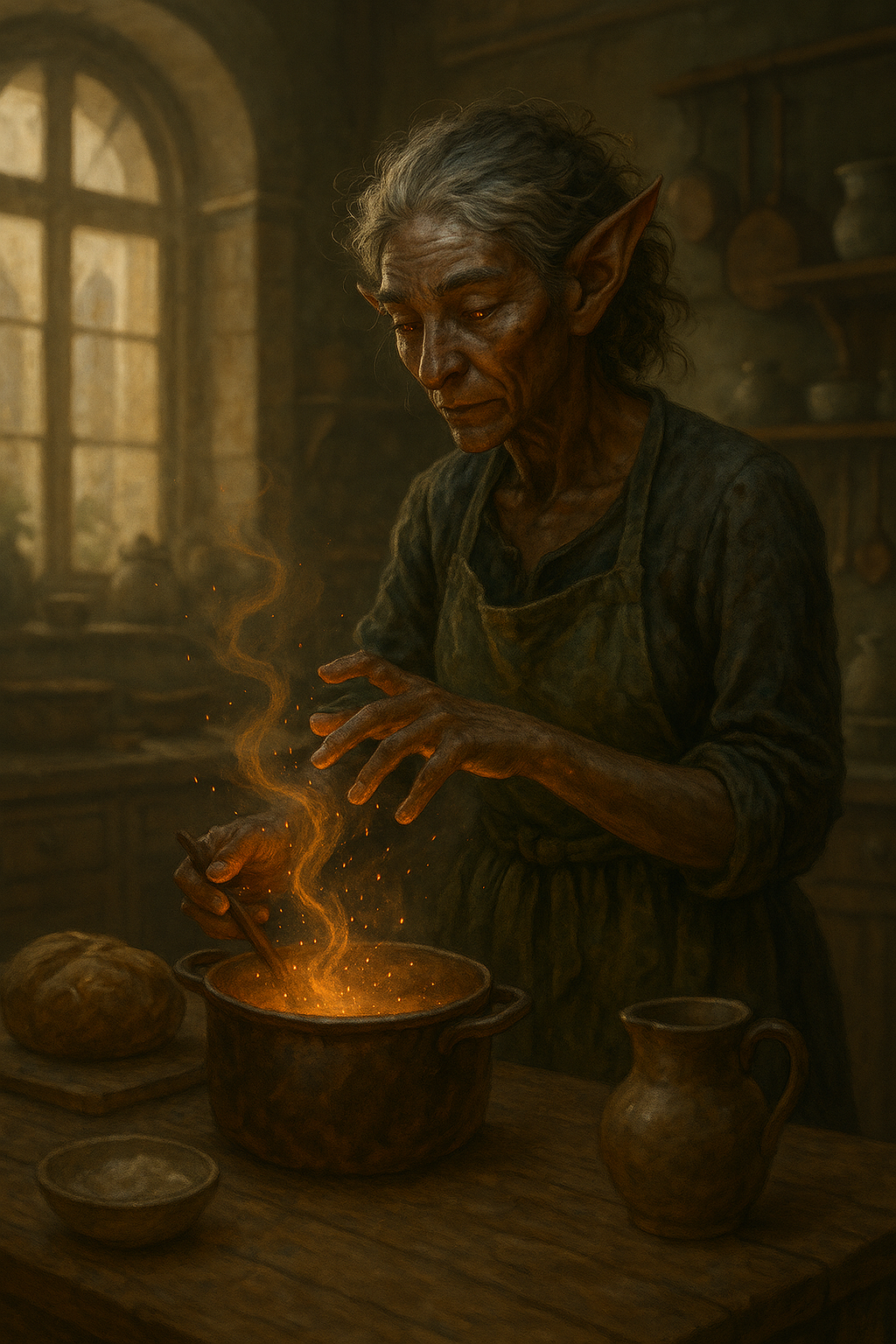The term lesser fae is a misnomer—an insult-turned-identifier, popularised by the Evergild Houses to reinforce their own sense of superiority. These fae once bore the name Lessae Fae, a title drawn from an older tongue. Lessae once meant woven or intertwined—a reference to their deep-rooted bond with the living weave of the world: its stories, its cycles, its breath.
But in time, as the Evergild distanced themselves from their own wild beginnings, they recast the Lessae as lesser—a deliberate diminishment, designed to unmake the dignity of those who refused to gild their souls in pursuit of power.

The Lessae Fae have always been of the in-between. When the great woods waned and the rivers dimmed, they did not rise into marble towers or gilded halls. Instead, they flowed into the cracks and corners of the cities—settling amongst the common folk, the misfits, the makers. They live not by coin or court favour, but by barter, by kinship, by quiet magic and worn-down rituals passed from hand to hand.
You’ll find the Lessae in cellar bars singing songs older than kingdoms. In crooked doorways where charms hang to ward away envy. In workshops where iron is whispered to, and ink is mixed with river dust. Their magic is subtle, stubborn, and strangely enduring—like moss in the stonework.
And, sometimes, you’ll find them in the grand houses of the Evergild.

Many Lessae, displaced by time and power, now serve as attendants, tutors, scribes, and silent housekeepers in the gilded wings of noble estates. Their names are shortened. Their histories ignored. But the Evergild still crave their old magic—even as they deny its source. A Lessae hand is often behind the finely-bound books, the impeccable inkwork, the subtle enchantments woven into gowns and garden paths. The Evergild call it refinement. The Lessae call it survival.
The nobles might sneer at their lack of polish, but the Lessae remember what the Evergild have tried to forget. They are not defined by bloodlines, but by belonging. Not by inheritance, but by interconnection. They are not lesser. They are enduring.
The Lessae Fae wear the city on their skin.
Their features are as varied as the paths they’ve walked—weathered but sharp, with eyes like city lights reflected in puddles: flickering, knowing, alive. Hair often carries the texture of their old ties to nature—mossy curls, soot-dark waves, or wind-frayed braids streaked with ash, rust, or the pale sheen of bone-white. Their skin bears the tones of brick, fog, clay, or tarnished silver—earth-wrought, city-worn, and steady.
Unlike the Evergild, whose skin blooms in vivid hues—lavender, jade, rose-gold—and shimmers with ancestral magic, the Lessae do not shift colour. Among the Evergild, skin is a proclamation of power: to maintain one’s true hue is a feat of magic and will, a visible signal of strength and nobility. The Lessae, by contrast, wear no such radiant proof. Their stillness is not weakness—it is constancy. But to the Evergild, it is another excuse for scorn.
And yet, something strange happens in the great houses.
Lessae fae who serve the Evergild—those who bind themselves to the rhythm of another’s home, another’s legacy—often begin to change. Slowly, subtly, their skin begins to reflect the tones of their masters: a faint lavender tint, a ghost of gold shimmer, a flush of pale jade beneath the surface. Scholars of the Compendium might call it ambient magic—an osmosis of power from proximity. The Evergild call it loyalty. But among the Lessae, it’s more complicated.
Some see it as contamination. Others, a loss. For a people whose identity is so deeply rooted in surviving without gilded glamour, to wear the shimmer of another house is a mark of difference. Of compromise. It creates a quiet rift—between those who serve and those who remain in the streets and markets, who still barter for herbs and whisper their magic into alleyways.
The Evergild may boast that their magic is infectious. The Lessae know it’s not always a gift.
On Lessae Magic
The Lessae Fae do not cast lightning from their hands or rend the skies with will alone. Their magic is quieter, older—a thrum beneath the surface rather than a blaze upon it. It is the magic of the in-between: not meant to rule, but to restore. Not to dazzle, but to endure.
Once, their power was unbound—woven into hearth and harvest, healing and craft. They could draw warmth into stone, charm rot from wood, steep a dream into tea leaves. It was magic lived through the body, sung through gestures, passed down not by scroll but by story, by practice, by care. The world responded not to command, but to kinship.
But when the Evergild rose, they redrew the lines. Power was no longer a shared current, but a possession to hoard. The Lessae’s art was reclassified—its uses diminished, its forms renamed. What had once been considered deepcraft or hearthweaving became household enchantment. Minor workings. Service magics. And, slowly, through decree and disdain, the Evergild ensured that these magics were treated not as gifts—but as functions.
Some say it was more than words that did it.
That somewhere in the founding of the Empire, when the great citadel was raised, rituals were woven—bindings written into the magical laws that governed Evergild dominion. Not strong enough to sever the Lessae’s magic outright, but enough to reshape its reach. Enough to anchor it to place, to task, to repetition. Enough to make it useful.
Now, a Lessae fae might mend what seems un-mendable. Might brew comfort into a cup. Might know, without being told, where something belongs. But ask them to set fire with a word, and they’ll say they never could. Whether it’s truth or conditioning, few can say.
And still, the magic remains. In the stitched seam that never frays. In the meal that restores more than hunger. In the corners of rooms that feel right because a Lessae hand passed through them. The Evergild call it convenience. Refinement. Obedience.
The Lessae know better.
It is not lesser. It is legacy.
